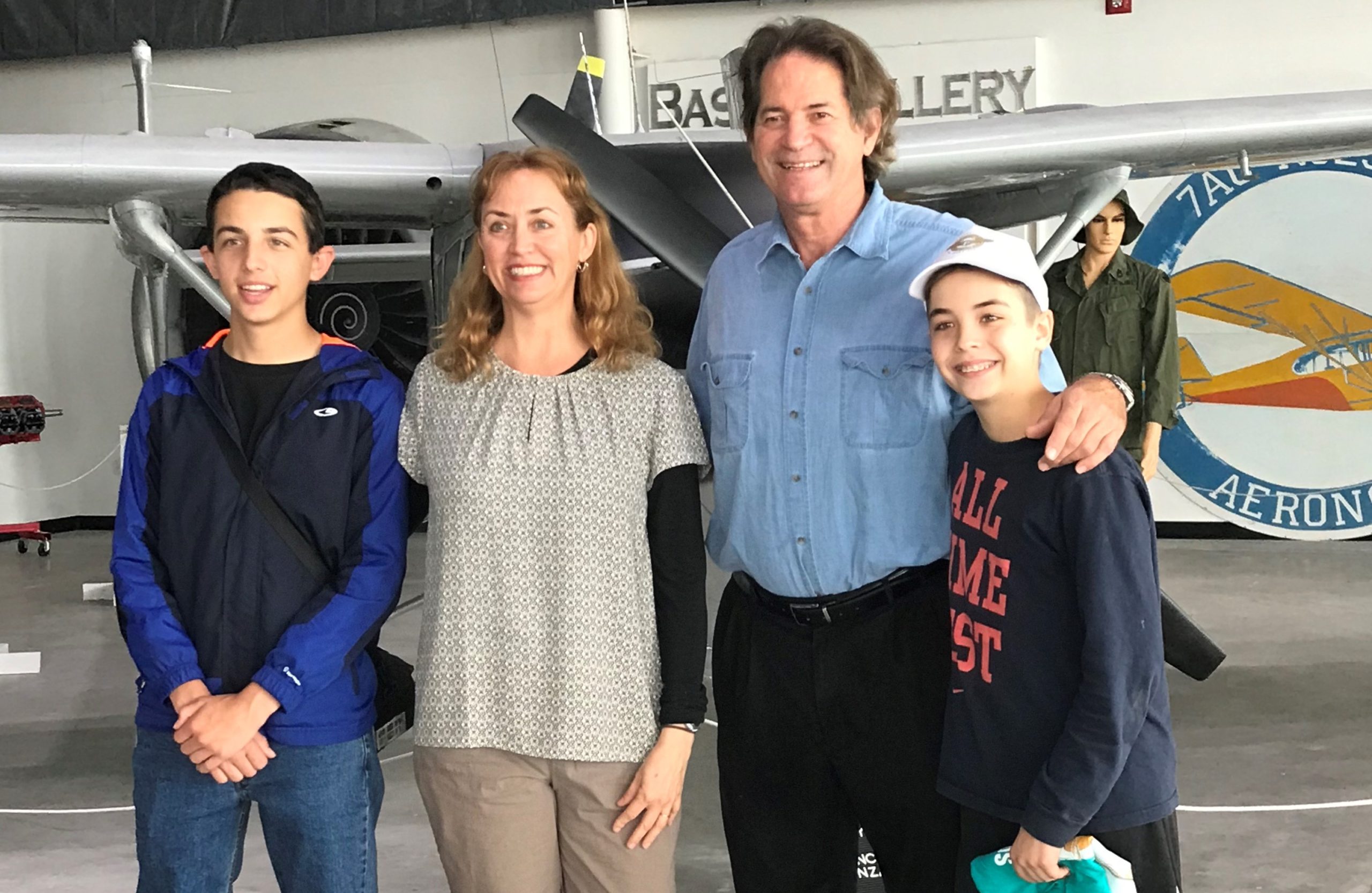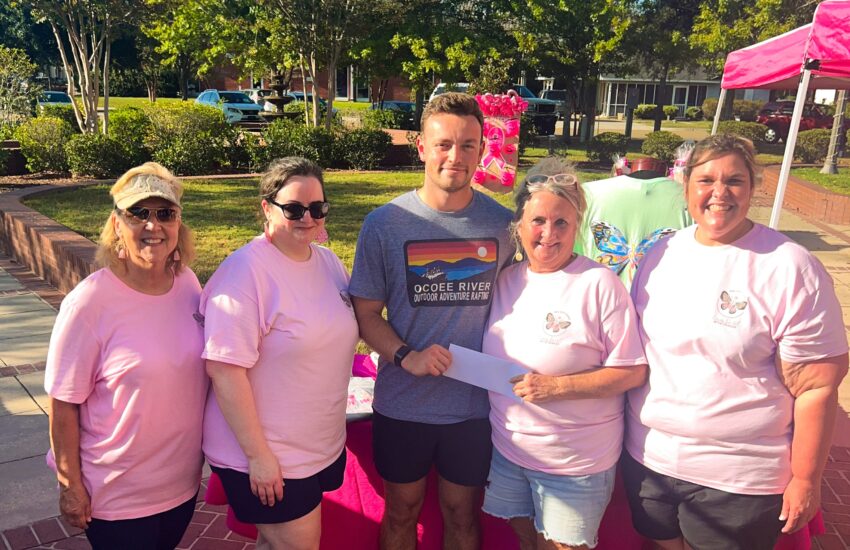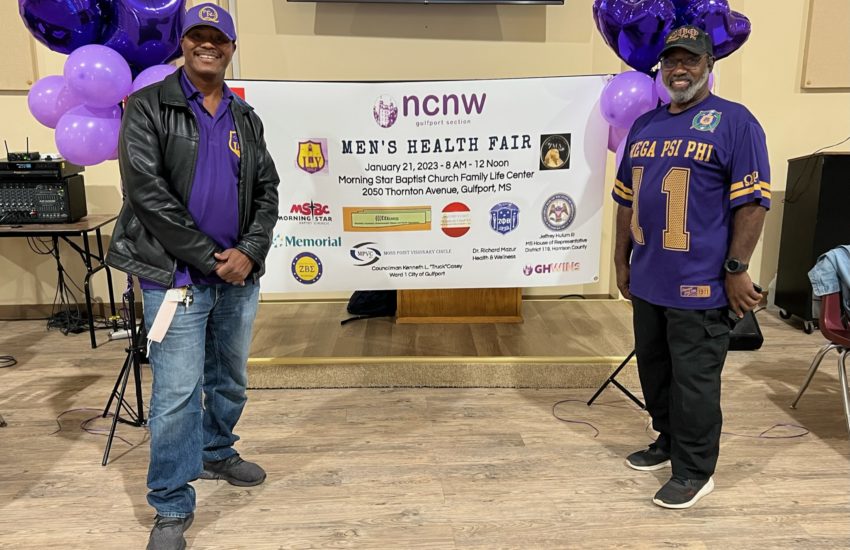Mississippi Aviation Heritage Museum takes flight with citizens across the Gulf Coast
Are you looking for family entertainment with historical and educational overtones on the Mississippi Gulf Coast? The Mississippi Aviation Heritage Museum (MAHM), located at 429 Pass Road in Gulfport, is a perfect addition to the Gulf Coast educational and entertainment scene for the entire family and casino visitors alike.
MAHM is open Monday-Thursday, 10 a.m. to 4 p.m., and Sunday, 12:30-4 p.m., near the south end of the Gulfport Airport runway.
A home-schooling mother, Lori Benoit, traveled from Austin, Texas, to the Gulf Coast to visit family. Ms. Benoit is always looking for fun educational entertainment for her two sons, and she found the Museum listed on “Things to do on the Gulf Coast.” Robert, 15, and David, 12, are both interested in the Civil Air Patrol at home. Robert is in the Auxiliary Pegasus Squadron. “The Museum was a great way to spend three hours. We really learned a lot and enjoyed ourselves thoroughly,” said Robert and David in agreement.
The museum had its origin as a tribute to the “Brown Condor” as Col. John C. Robinson, a Gulfport native, was known for his pre-World War II exploits in Ethiopia. Following the World War II invasion of Ethiopia by Italy, Col. Robinson returned to the United States and promoted aviation in the Afro-American community. His efforts eventually led to the formation of the Tuskegee Airmen in World War II.
The John C. Robinson Foundation (JCRF) directors enlisted the expertise of other museums and local experts before advancing their efforts and expanded the Museum’s purpose to include military and civilian aviation. In today’s world of Science, Technology, Engineering and Mathematics (STEM), interactive platforms are essential for learning. The MAHM provides from touch tables to flight simulators with control towers to enhance the experience. Discussions of aerodynamics and avionics are held to demonstrate the science of flight.


The Museum is a non-profit organization with a long bucket list. Volunteers are the first item on that list. Todd Young, originally from Plymouth, NH, has been volunteering at the Museum for over a month and is delighted to put his life skills to work in the transformation of the large space leased from the city of Gulfport. Young said, “I am delighted to bring this collection of model airplanes and share my commitment to science and outreach to the community with the development of classrooms and meeting space for STEM-based displays.
“I have found the perfect job and will stay in Gulfport forever.”
Non-licensed ground school classes, lessons on how planes fly and “Visual Fight Rules” and much more will be offered on site. Flight simulators are now in operation, with the promise of motion-activated seats in the not-too-distant future.
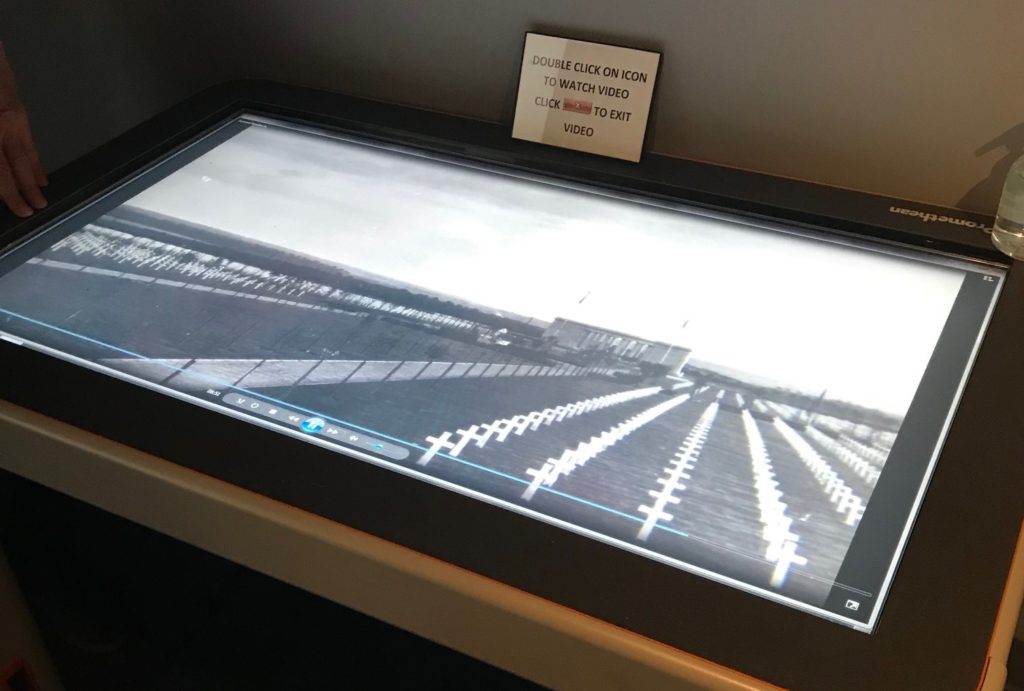

Volunteer Michael Bonner was sent by the Mississippi Hub Network (connecting concerned citizens with meaningful volunteer opportunities). “I was an intern at another non-profit and was directed to the opportunity here at the Museum. I am really enjoying the work at the Museum.” Mr. Bonner’s mother, Sharla Bonner, also volunteers. They have assisted at the Museum for about six months.
A volunteer with his heart and soul in the job is Francisco Gonzalez, executive director. He has been working toward opening the doors of the Mississippi Aviation Heritage Museum for over 16 years. Do you call that volunteering or infusing your life blood into a passion that started at age 6 when he flew with his father and later earned his pilot’s license at a young age. Mr. Gonzalez has a dream donation of a P-51 Mustang fighter plane to draw the crowds through the doors of the MAHM. Looking to the future, “I want you to sit in a restaurant with a top floor view of the airport.”
The heritage earned by Mississippi aviators and support personnel is state-wide and includes such names as Keesler, Key, Jones, Roberts, O’Keefe, Turner, Brown and Barnett. Modern day names of astronauts are Fred Haise and Stuart Roosa, Jr. The backgrounds and accomplishments of the Mississippi aviators are immortalized by individual marquees that can be read in their entirety inside the Museum’s Mississippi Aviation Hall of Fame. Truly a “hidden gem” with interactive displays and historic exhibits.
For more information about the Mississippi Aviation Heritage Museum, to become a volunteer or to make a donation, call 228-864-6359 or visit http://www.msaviationmuseum.org

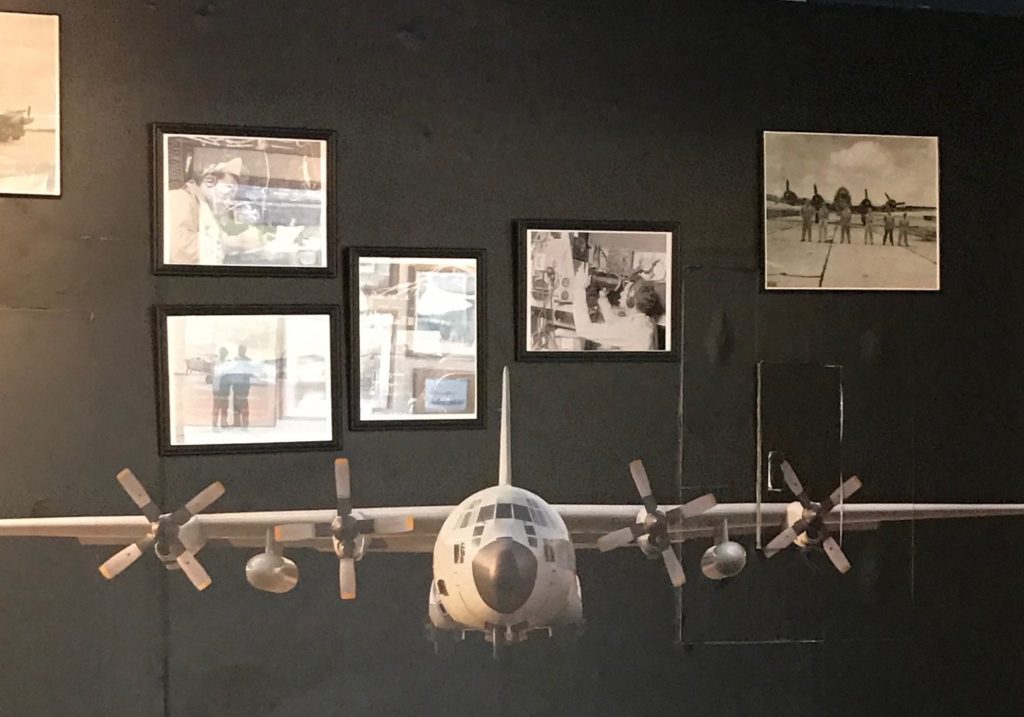
The Mississippi Aviation Heritage Museum’s Hall of Fame features:
Algene and Frederick Key, Meridian
Al and Fred Key were brothers and pioneers of aviation from Kemper County, who established the world flight endurance record. They witnessed three wayward planes from the nearby WW1 training base land in the family pasture, the brothers knew they wanted to fly.
A.D. Hunter, Meridian
A.D. Hunter was a mechanic who worked for the Key brothers and invented a spill-free fueling system-during fueling, if the nozzle was removed from the tank, the fuel would automatically stop flowing. This nozzle was later adopted by the U.S. Army Air Corp and is still in use today with some modifications.
John Charles Robinson, Gulfport
John C. Robinson overcame racial segregation to become a pilot in 1927. He joined the Imperial Ethiopian Air Corps in 1934 when the country was facing an invasion by Fascist Italy and became known as The Brown Conor of Ethiopia for his exceptional skill in flying reconnaissance. He is also known as the Father of the Tuskegee Airmen for convincing the university of the need for a school of aviation.
Henry Herbert “Hank” Ogden, Wilkinson County
Henry “Hank” Ogden was one of eight intrepid U.S. Army aviators to undertake the first successful flight around the world from April 6-September 26, 1924. They left Seattle and headed west to circumnavigate the globe, covering 27,550 miles and making 74 stops in the 175 day journey.
Willie “Suicide” Jones, Leland
Little is known about the early life of Willie “Suicide” Jones. He is believed to have been born in 1913 near Leland, Mississippi into a sharecropping family. Jones ran away to Tennessee at age 13, and was taken in by Vernon C. Omley, a crop duster and barnstormer who ran one of the many traveling “flying circuses” that were popular in the 1920s. Jones worked for Omley, who in return trained him as a pilot, mechanic, and aerial stunt man.
Cora “Earsly” Taylor Barnett, Vicksburg
Cora “Earsly” Taylor Barnett earned her commercial pilot’s license in 1954, becoming the first certified flight instructor in Jamaica and the holder of commercial pilot’s license No. 1. She and husband Carl opened Barnett Aviation, a flight training and air charter operation with local and overseas flights, sightseeing tours, and an air ambulance.
Roscoe Turner, Corinth
Roscoe Turner was a record-breaking American aviator and daredevil who flew with a pet lion in the cockpit. His school in Corinth only reached tenth grade, but he developed an interest in mechanical objects, experimenting with hardware, kites, bicycles, and automobiles. His father lectured him: “You’ll never be worth anything if you keep fooling around with things that burn gasoline instead of oats.”
Jesse Leroy Brown, Hattiesburg
Jesse L. Brown was a U.S Navy officer, the first African-American aviator in the U.S. Navy, a recipient of the Distinguished Flying Cross, the Purple Heart Medal, and the Air Medal. He was the first African-American naval officer killed in the Korean War.
Samuel R. Keesler, Jr., Greenwood
Samuel Reeves Keesler, Jr. was a pilot in the U.S. Army Air Service in World War I. Lieutenant Keesler was trained as an aerial observer and gunner assigned to the 24th Aero Squadron in the Verdun sector of the Western Front in 1918. He was shot down by German combatants and died in a German field hospital.
Richard H. Truly, Fayette
Richard Harrison Truly was born in Fayette in 1937. He attended school in both Fayette and Meridian. He graduated from Georgia Institute of Technology in 1959 with a Bachelor of Science degree in aeronautical engineering, after which he entered the U.S. Navy. Between 1960 an 1965 Truly served as a naval aviator and flight instructor, after which he joined the U.S. Air Force’s Manned Orbiting Laboratory Program (MOL). He joined NASA in 1969.
Donald H. Peterson, Winona
Born in 1933 and raised in Winona, Donald Herod Peterson graduated from Winona High School in 1951 at the top of his class. He received his Bachelor of Science degree from the U.S. Military Academy at West Point in 1955, after which he elected to join the U.S. Air Force. Peterson’s early assignments include working as a flight instructor, fighter pilot, and nuclear systems analyst. He also continued his education, completing the Aerospace Research Pilot’s School at Edwards Air Force Base and earning a Master of Science degree in 1962.
Fred Wallace Haise, Biloxi
Fred Haise is a former NASA astronaut, fighter pilot with the U.S. Marine Corps and the U.S. Air Force, and Space Shuttle test pilot. As Lunar Module Pilot on Apollo 13, he is one of only 24 people to have flown to the Moon, and was scheduled to be the sixth person to land on the Moon until the Apollo 13 mission was aborted before lunar landing.
Stuart Allen Roosa, Sr., Gulfport
Stuart “Stu” Roosa was an American Aeronautical engineer, U.S. Air Force pilot, test pilot, and NASA Command Module Pilot for the Apollo 14 mission. The 1971 mission was the third mission to land astronauts on the Moon. Roosa conducted experiments from orbit in the Command Module “Kitty Hawk.”
Jeremiah Joseph “Jerry” O’Keefe III, Biloxi
“Ace in a Day” is a term used to designate a pilot who has shot down five or more airplanes in a single day. Jerry O’Keefe became an Ace in his very first battle over Okinawa in World War II.
Colonel Lawrence E. Roberts, Pass Christian
Lawrence Roberts was a pilot with the famous Tuskegee Airmen and a colonel in the U.S. Air Force with 32 years of military service. President George W. Bush honored Roberts with the Congressional Gold Medal for bravery, patriotism and helping persuade President Harry S. Truman to desegregate the armed forces.
On the Cover: Lori Benoit of Austin, Texas, and sons Robert and David Benoit, pause during a visit to the Mississippi Aviation Heritage Museum in Gulfport to meet its executive director, Francisco Gonzalez.

Years of living along the Gulf Coast with a penchant for capturing photographs of smiling faces and beautiful places has brought Susan Weller to Seaside Social News. “This tenure will enhance my opportunities to capture and promote the exciting venues and activities generated by our lovely Gulf Coast and the people who live and celebrate life’s joys.”

